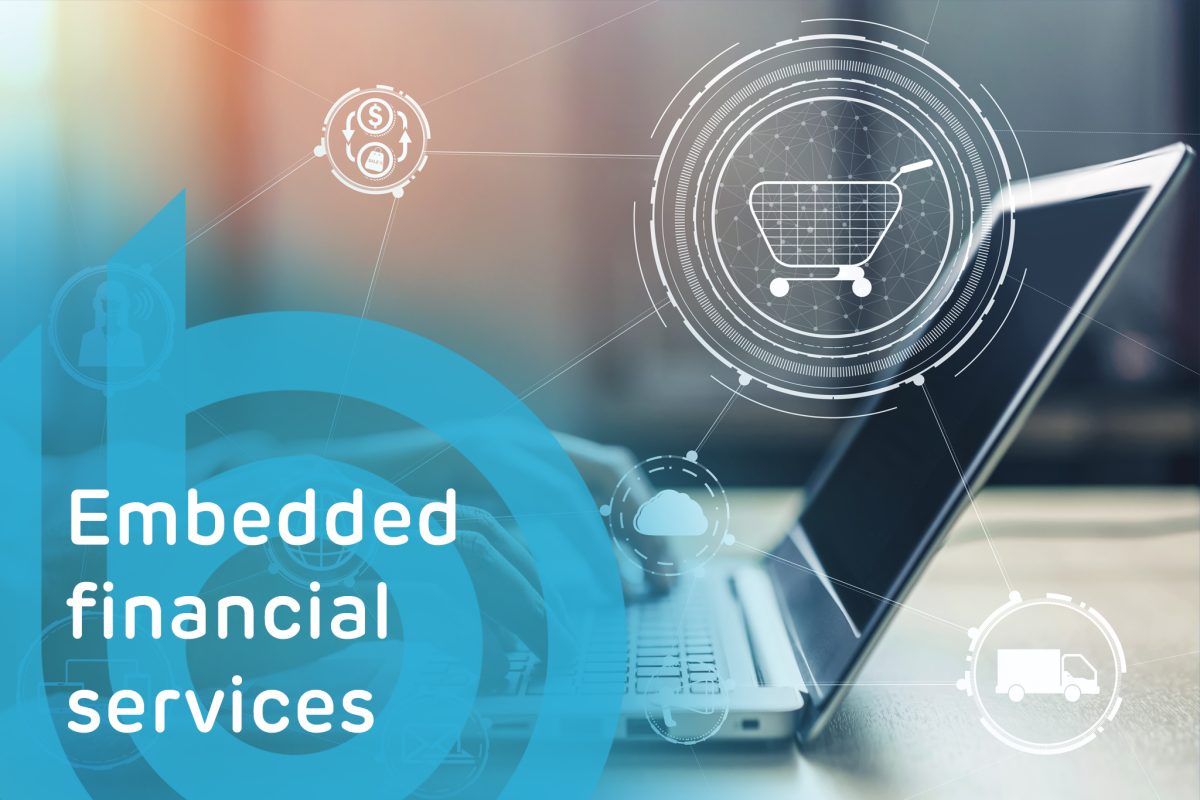How embedded finance can help drive business growth and bring benefits to your organisation
Embedded finance in businesses of all sectors is providing opportunities for growth and creating happier customers.

In recent years, embedded finance has been making waves in the business world, allowing organisations to offer their customers additional services, simplify transactions, and improve customer loyalty.
The new possibilities brought about by embedded finance even led Andreessen Horowitz’s Angela Strange to remark in 2019 that “every company will be a fintech”.
While that prediction may or may not come to pass, the emerging truth is that embedded finance in businesses of all sectors is providing opportunities for growth.
What is embedded finance?
Embedded finance is the integration of banking systems into non-banking organisations – for example, when a business offers ‘buy now pay later’ options on purchases, offers loans, or uses branded debit cards. The likelihood is that these businesses are not registered banks, as acquiring a banking license entails adherence to strict regulations and meeting significant capital requirements.
Instead, to offer these services to customers, businesses partner with a Banking-as-a-Service provider who lease their licensed online banking services to non-banking organisations.
This is all facilitated through the use of an API (application programming interface) which is essentially a type of code which allows a business’s system to speak more easily to a bank’s, allowing businesses to ‘plug in’ to a bank’s specific financial service and pick and choose which parts of the overall banking provision they want to opt into.
This means that when, for instance, a customer chooses to pay for a sofa on finance, it’s not the furniture company they’re borrowing from, but the bank that is providing the furniture company’s financial services.
What are the benefits of embedded finance?
It leads to happier customers
The pain point of needing to seek credit elsewhere can be eliminated with embedded finance options, which leads to a more streamlined purchasing experience. Customers don’t need to interact with multiple organisations to make a purchase, and are therefore less likely to abandon carts at checkout.
This improved overall experience means that customers are more satisfied with your business, are more likely to return in future, and have a higher likelihood of developing brand loyalty.
It can be used to offer incentive schemes to customers
Using reward and incentive schemes is a sure-fire way to build brand loyalty among customers. With embedded financial options, brands can go beyond the tried and tested “stamp card” by offering valuable and meaningful services to customers that also propagate loyalty.
An example of this is the Tesco Clubcard Pay+; a Tesco branded debit card which earns Clubcard points whenever it’s used, and extra when used in a Tesco store. It allows customers to ringfence their grocery budget on a Tesco debit card, and integrates the Tesco brand and the loyalty scheme into the customer’s daily purchasing habits.
This is what customers want
Embedded finance schemes and services have seen huge take-up from customers in all sectors, proving that they are answering problems and providing value to consumers and clients.
One example is the Starbucks App and card system, which allows customers to transfer money to their Starbuck’s account so that they can quickly pre-order coffee. In the US, it was reported that Starbuck’s had more money loaded onto Starbucks cards and their app in 2016 than many banks had in deposits. 41% of their custom was carried out through the app/ Starbucks card.
You can gather additional data on how your customers behave
With embedded finance options, new opportunities to better serve your customers can become apparent via the additional data that can be harnessed.
Embedded finance services offer many ways for your customers to interact with your brand, and offer insights into how your customers behave, how they spend their money, and how they interact with your services, depending on the financial service they’re using.
This data can be leveraged to uncover trends, offer more personalised deals and marketing, and inform business operations at a decision-making level.
The solution you choose depends on your business and your goals. At B4B, we have a range of embedded financial services that can drive growth and bring benefits to your organisation. Get in touch with our advisors to discuss your needs.



